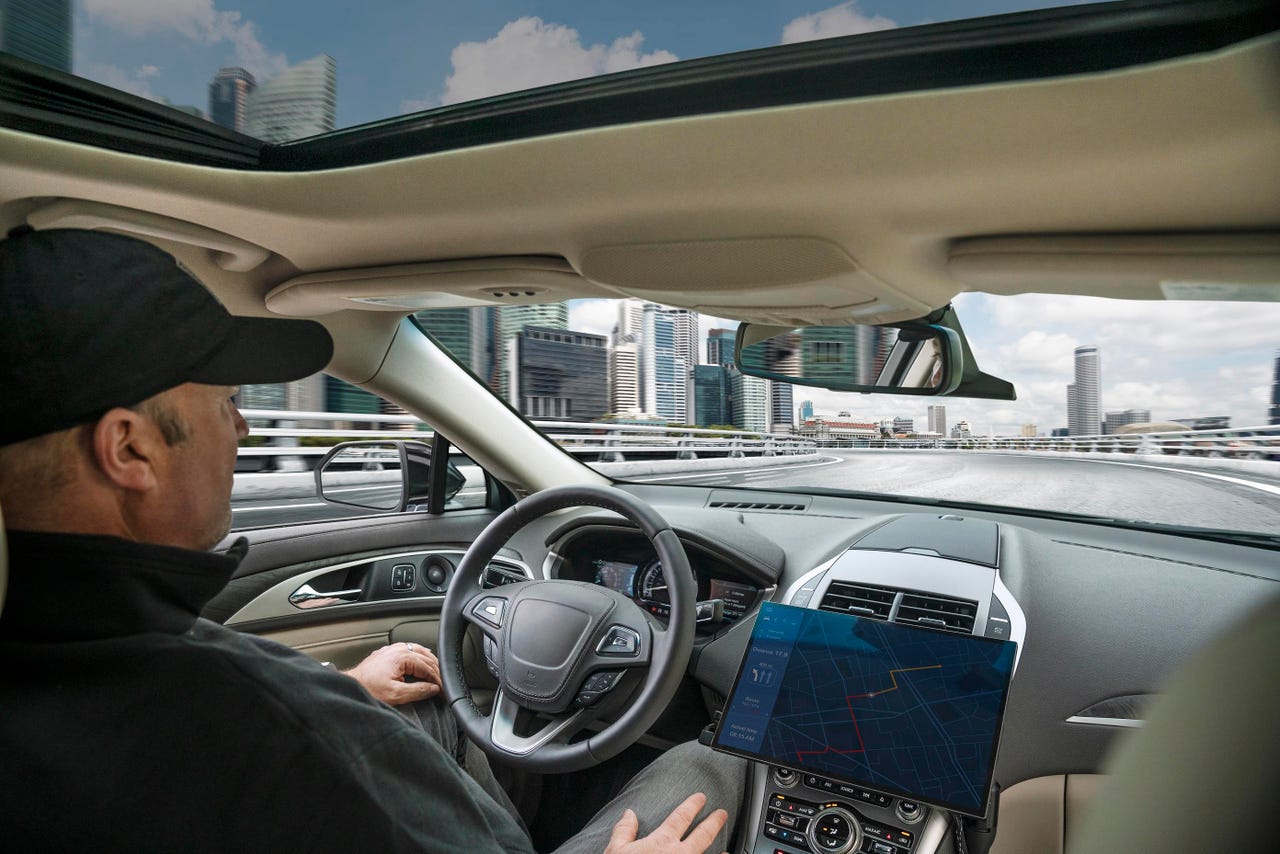CES 2020: Qualcomm Automotive unveils new autonomous driving platform


At the start of CES 2020, Qualcomm announced Snapdragon Ride, a new autonomous driving platform designed to scale across all levels of autonomy, from Level 1 and Level 2 vehicles that offer driver assistance to completely self-driving L5 vehicles. The Snapdragon Ride takes a holistic approach to building autonomous services, combining hardware (comprising an advanced system-on-chip (SoC) and accelerators), software, open stacks, development kits, tools, and a partner ecosystem.
Also: More CES coverage at CNET
With its new platform, Qualcomm is aiming to accelerate the deployment of autonomous vehicles with a centralized architecture, creating a comprehensive platform that allows for updates to a vehicle's features and functionality, customization, and scalability.
Thanks to advances in areas like automation and connectivity, the auto industry has reached an inflection point, "where automakers are forced to look into architectures that are more data-centric, more scalable -- the performance requirements are going up significantly," Qualcomm automotive spokesperson Anshuman Saxena said to ZDNet.
Today's cars rely on hundreds of different electronic boxes to control individual functions, he explained, from the driving plane to controlling the windows. But as systems become more autonomous, requiring more robustness and reliability, this kind of distributed system becomes less feasible.
However, a high-performance, centralized system typically ends up burning a lot of power, typically requiring a thermal management solution like liquid cooling, which can be complex and expensive.
The thermal efficiency of the Snapdragon Ride solves that, Qualcomm says. The platform can deliver over 700 Tera Operations Per Second (TOPS) for L4/L5 driving at 130 W. This can enable simpler designs that are passively air-cooled, reducing costs and improving reliability, Qualcomm says. All told, the platform has more than 2x the efficiency of older architectures, the company says.
Its energy efficiency should bring new compute capabilities to mainstream cars, Saxena said.
Automakers can use the platform with their own algorithms or with the Snapdragon Ride Autonomous Stack. The purpose-built autonomous driving software stack offers optimized software and applications for complex use cases, such as self-navigating highway driving, as well as a choice of modular options like Perception, Localization, Sensor Fusion, and Behavior Planning. The software infrastructure can also co-host customer-specific stack components with Snapdragon Ride Autonomous Stack components.
Snapdragon Ride will be available for pre-development to automakers and tier-1 suppliers in the first half of 2020. Qualcomm expects Snapdragon Ride-enabled vehicles to be in production by 2023.
Car-to-Cloud Services Platform
Qualcomm also introduced the new Car-to-Cloud Service, a suite of connected-car services that enable automakers to keep vehicles up to date with over-the-air (OTA) updates. It's designed for Qualcomm's Snapdragon Automotive Cockpit Platforms and Snapdragon Automotive 4G and 5G Platforms -- in other words, the service will keep cockpit and telematics systems up to date.
In addition to enabling OTA updates, Qualcomm noted that the service could help automakers create new revenue streams. It could, for instance, enable pay-as-you-use services for customers. Automakers can also use it to gather vehicle and usage data, which could enable them to provide customized services for drivers and passengers.
Qualcomm is also introducing the Car-to-Cloud Soft SKU, allowing for field-upgradeable chipsets that can bring new functionality to vehicles. It allows automakers to develop on common hardware.
The Car-to-Cloud Service is planned to be available in the second half of 2020.
C-V2X Platform
Meanwhile, Qualcomm is also building on the work it's done to advance Cellular Vehicle-to-Everything (C-V2X) technology, this year rolling out a C-V2X reference platform for both vehicular and roadside units (RSU). After already developing C-V2X automotive platforms, bringing C-V2X technology to roadside infrastructure is the next step.
C-V2X technology encompasses two transmission modes -- direct communications and network-based communications -- to enable a vehicle to communicate with other cars and infrastructure around it. It's key for both vehicle safety features and for implementing autonomous driving capabilities. For instance, using direct communications capabilities, C-V2X technology can help improve a car's situational awareness by allowing it to exchange low-latency transmissions with other vehicles, infrastructure, or even pedestrians.
The new reference platform is designed to complement C-V2X communications solutions, providing the computational power for 4G and 5G wireless and C-V2X solutions like multi-frequency GNSS location services or V2X message security.
The platform is pre-integrated with software applications to further accelerate the deployment of C-V2X systems in the US and globally. After a series of trials and demonstrations that began in 2017, Qualcomm says C-V2X is ready for commercial deployment.
New Wi-Fi 5 and Bluetooth combination chip
Qualcomm on Monday also announced a new Automotive Wi-Fi 5 and Bluetooth combination chip, the QCA6595AU. It provides automakers with high-performance dual Medium Access Control (MAC) Wi-Fi 5 and the latest generation of Bluetooth 5.1.
The new chip complements Qualcomm's existing Wi-Fi 6 and Single MAC Products, completing its portfolio of scalable Wi-Fi and Bluetooth products for every tier of vehicle.